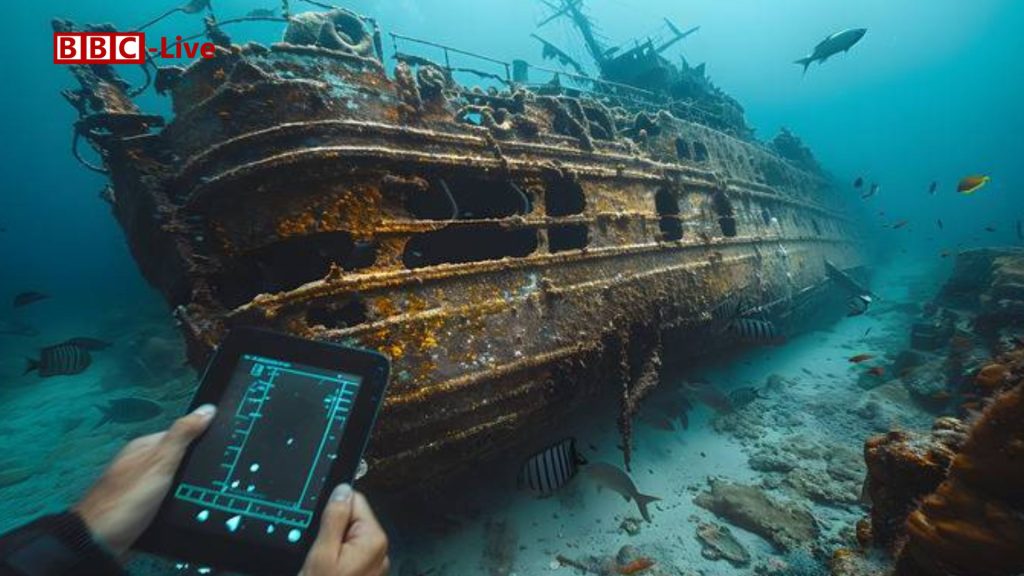
Lost Shipwreck Treasures Could Unlock Powerful Reparations for Colonial Exploitation
Hidden beneath the ocean for hundreds of years, the treasures of shipwrecks tell more than in reality memories of maritime journey. additionally they preserve echoes of the painful histories of colonial exploitation. Tim Maxwell, an worldwide cultural historical past lawyer, believes that the ones underwater relics ought to play a characteristic in reparations for nations that suffered during the transatlantic slave alternate.
“large wealth changed into taken from areas like South america and the Caribbean — gold, silver, emeralds — regularly extracted via compelled difficult paintings,” Maxwell explains. “but even as shipwrecks are located, it’s former colonial powers who declare ownership. That’s a moral contradiction in nowadays’s global, in which discussions approximately reparations are becoming greater extreme.”
One immoderate-profile instance is the wreck of the San José galleon, a Spanish treasure deliver sunk by the British in 1708 off the coast of Colombia. The ship, stated to carry gold, silver, and emeralds well worth billions in recent times, has been at the middle of ownership battles amongst Colombia, Spain, Indigenous Bolivian companies, and private salvage organizations. despite the reality that the deliver rests in Colombian waters, Spain argues it turn out to be a part of their imperial fleet, complicating the difficulty of rightful possession.
Maxwell stresses that those treasures aren’t simply economic assets; they represent a legacy of exploitation. “The gold and silver onboard the ones ships came from colonial mines in which Indigenous humans have been pressured to paintings in brutal situations. It’s handiest proper that the ones international locations have a claim to those artefacts.”
In reality, many shipwrecks from the colonial length lie scattered at some point of the Caribbean and South American waters, often misplaced to storms or assaults thru rival colonial forces. however the contents of those ships — gold, jewels, and other belongings — inform a familiar story: wealth extracted from colonized lands, enriching Europe at the fee of Indigenous and enslaved peoples.
Caecilia Dance, a solicitor at Maxwell’s London firm Wedlake Bell, factors out that the legal guidelines round shipwreck claims still lean in favor of colonial powers. “nations like Peru, Colombia, and Bolivia have been closely looted by using manner of ecu empires. but even nowadays, former colonial countries nevertheless assert ownership over shipwreck artefacts, which feels quite outdated.”
Efforts to move again looted artefacts from museums have obtained traction in cutting-edge years, with great examples similar to the cross returned of the Benin Bronzes to Nigeria and Indonesian artefacts surpassed once more via the Netherlands. Maxwell argues that the equal requirements have to practice to shipwreck discoveries.
“We’ve already seen museums and governments understand the ethical responsibility to return stolen cultural background,” he says. “It’s time to increase that to treasures decided underwater.”
The story of the San José galleon moreover highlights the human price of those treasures. an lousy lot of the wealth onboard grow to be mined in Potosí, a place in 5bf1289bdb38b4a57d54c435c7e4aa1c-day Bolivia. ancient debts describe the lousy situations in the mines, wherein Indigenous human beings have been pressured to exertions beneath brutal situations, often at the price of their lives.
Dr. Sean Kingsley, a maritime archaeologist and co-author of Enslaved: The Sunken information of the Transatlantic Slave trade, believes these shipwrecks maintain every monetary and symbolic cost. “these aren’t just artefacts; they’re a tangible link to a painful beyond. There’s a communication to be had approximately who clearly owns that sunken records.”
however, Kingsley warns that now not all shipwrecks convey treasure much like the San José. Many vessels transported gadgets like sugar, which have in view that dissolved, leaving little fabric charge. “however the precept stays the same,” he says. “We’re speaking approximately acknowledging records and ensuring fairness in how we deal with the ones discoveries.”
Historian Jeff Forret, creator of The price They Paid: Slavery, Shipwrecks, and Reparations earlier than the Civil struggle, is of the same opinion that the idea is possible, but political will is high. “It’s one trouble to acknowledge historical wrongs, however it’s each different to do so,” Forret says. “Governments need to transport beyond symbolic gestures and make tangible reparative efforts.”
Maxwell and Dance stay hopeful that attitudes will exchange as discussions round reparations benefit momentum globally. “There’s an opportunity right here for former colonial powers to right some of the wrongs of the past,” Dance says. “Returning those treasures isn’t quite a lot possession — it’s about acknowledging data, addressing injustice, and giving decrease again to the communities that suffered most.”
As the arena keeps to grapple with the legacy of colonialism, shipwreck discoveries should offer a significant manner to promote reparative justice. “those treasures were misplaced at sea for hundreds of years,” Maxwell says. “It’s time to deliver them lower back — now not to museums in Europe, but to the international locations they had been taken from.”




